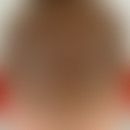DefinitionThis section has been translated automatically.
Bohring-Opitz syndrome is characterized by intrauterine growth retardation, failure to thrive, facial dysmorphia (prominent metopica suture, naevus flammeus on the forehead, deep frontal and temporal hairline with hirsutism, chubby cheeks, antimongoloid course of eyelid axes, exophthalmos, hypertelorism, cleft lip and palate, retrogenia, low-set ears), flexion deformities of the elbows and wrists, camptodactyly, ulnar deviation of the fingers, foot malformations, and severe developmental delay. Fewer than 20 patients have been described. Most patients were sporadic, but autosomal recessive inheritance has also been described.
Occurrence/EpidemiologyThis section has been translated automatically.
Prevalence: <1 / 1. 000. 000
You might also be interested in
EtiopathogenesisThis section has been translated automatically.
Described are associations with mutations in the ASXL1 gene (Bedoukian E et al. 2018).
ManifestationThis section has been translated automatically.
Prenatal, neonatal period
LiteratureThis section has been translated automatically.
- Bedoukian E et al (2018) Bohring-Opitz syndrome caused by an ASXL1 mutation inherited from a germline mosaic mother. Am J Med Genet A176:1249-1252.
Disclaimer
Please ask your physician for a reliable diagnosis. This website is only meant as a reference.




